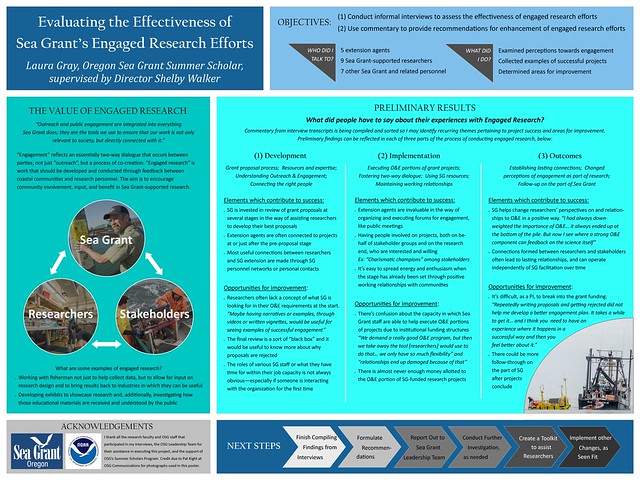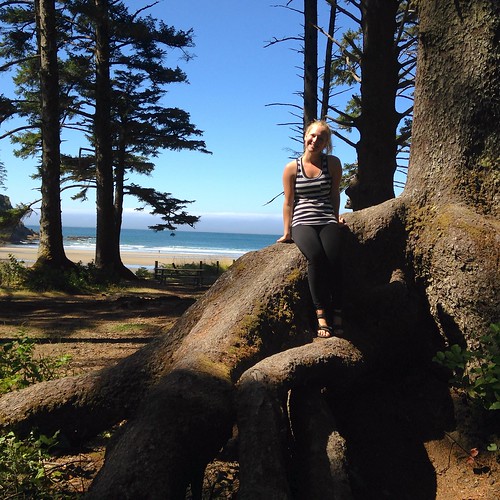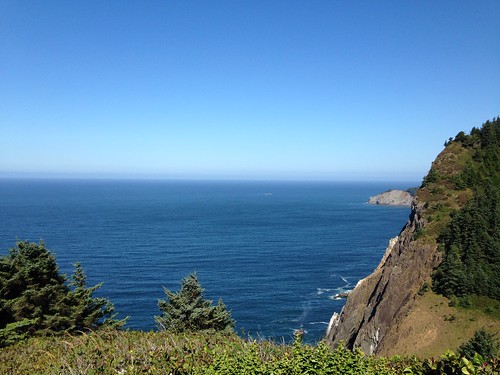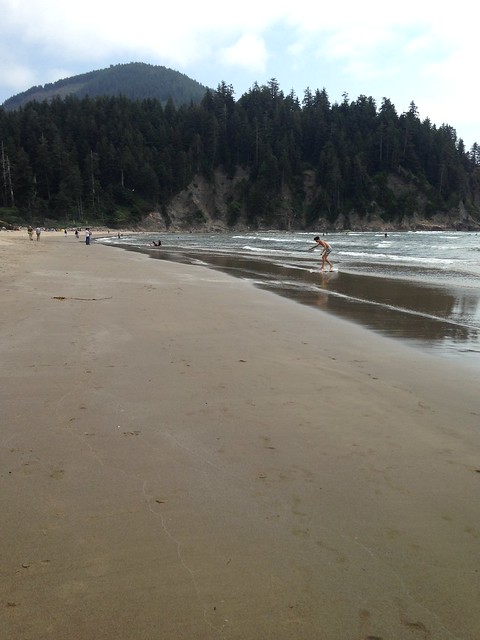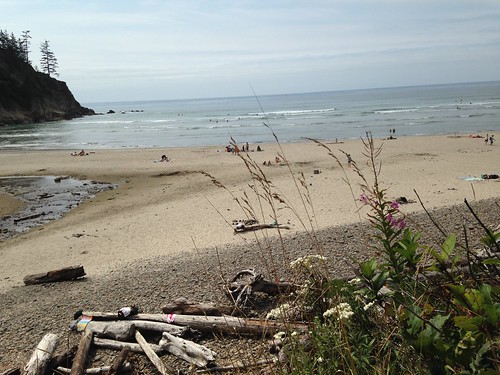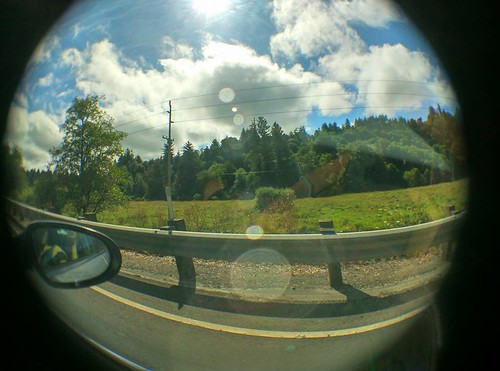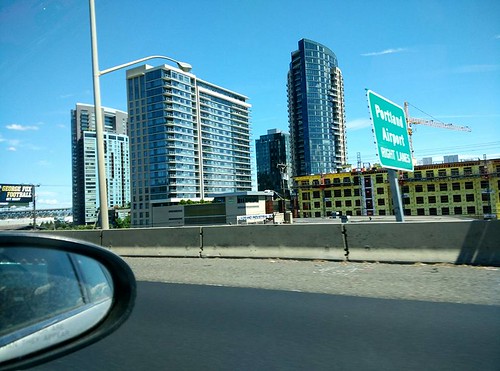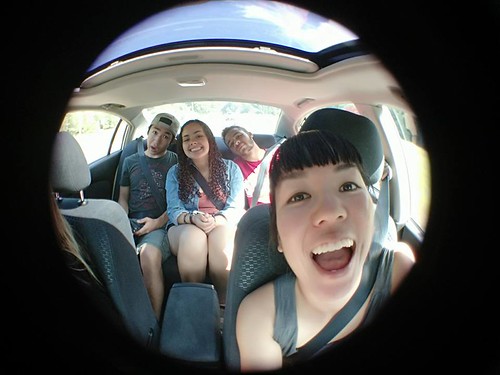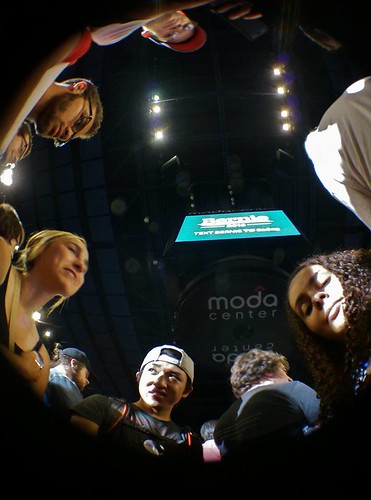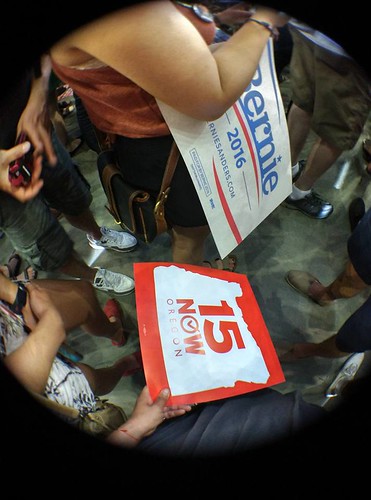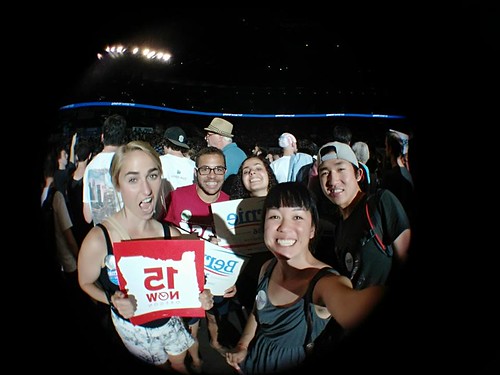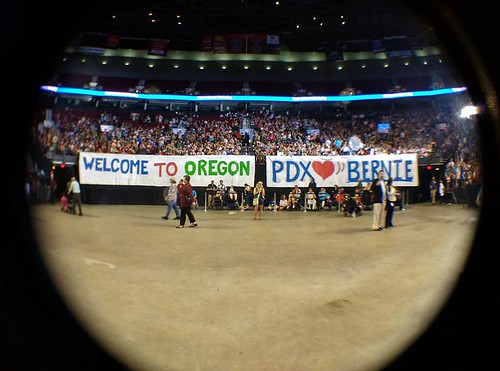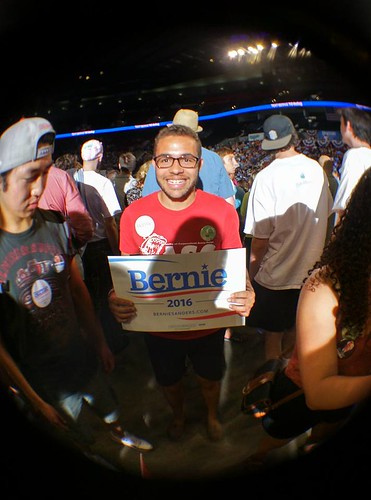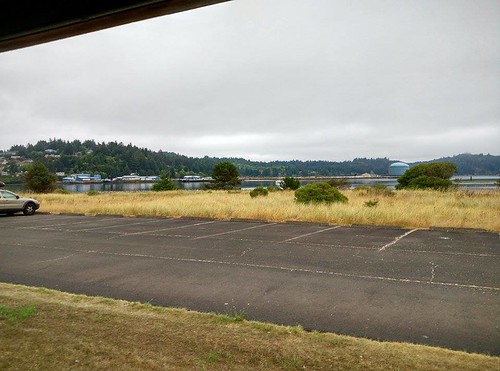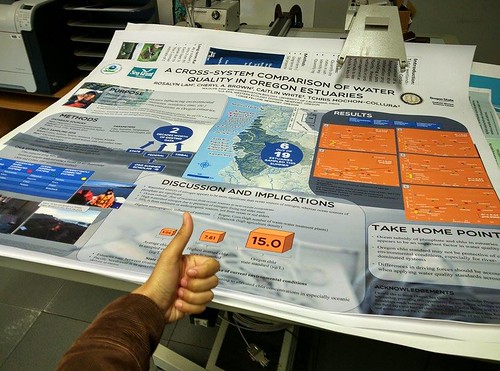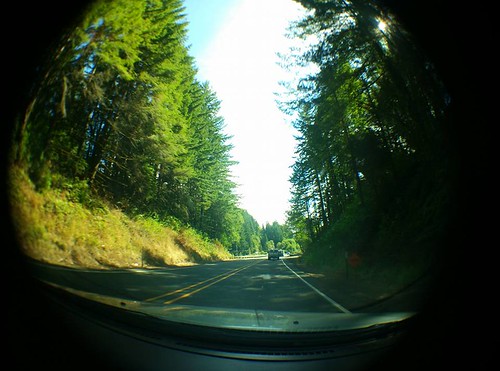The State of Oregon is currently applying for HUD’s Natural Disaster Resilience Competition, and there is an opportunity for you to comment on the proposed projects. Check out the draft application, and send comments to hud@oem.state.or.us. Please include “HUD NDRC Application Phase 2 Public Comment” in the subject line of the email.
The 2015 OAPA Conference & SRGP Applications
The 2015 Annual Conference for the Oregon Chapter of the American Planning Association starts today, and I will be there to talk about the SRGP. Mostly, I’ll be talking about how the SRGP is currently accepting applications until the end of 2015. Check here for more updates on application procedures.
Oregon Coast Economic Summit
The Oregon Coast Economic Summit was a huge success! Even Governor Kate Brown showed up!
Week Ten: The End
I decided to write my final blog post on my second to last day of work at the EPA. I am only working three days this week, because I need time to pack for school before I fly to Pennsylvania on Saturday, and tomorrow the interns are presenting their summer work. This week wasn’t eventful, I was mainly finalizing tables at work and preparing for school. However, amidst the uneventfulness, I had time to reflect on this past summer and whether I achieved the SMART goals that I had created at the beginning of the summer.
I had three SMART goals. My personal goal was to learn to cook cheap and healthy food that tastes good every evening for dinner, while my two professional goals were to provide useful feedback during my team’ weekly group meetings that will contribute to the overall outcome of CBRAT and to determine whether I can see myself as a future EPA employee like I previously desired, or if non-governmental organizations seem more exciting and relaxed than the rigid structure of a government agency.
My personal goal was to a certain extent achieved. I did not starve obviously but I did not particularly venture into the world of cuisine. I made burritos, nachos, salad, sandwiches, pasta, and other easy dishes. However, I feel like even though these dishes are not complex, it still required basic skills such as using the stove and microwave and chopping up veggies.
My first professional goal was achieved, however, without question. Every week, I shared what I had been working on and what values I found, but I also helped design the homepage for CBRAT, compile a list of ‘to-do’ items for CBRAT’s public version, helped identify problems with CBRAT, and helped write an abstract submission to a climate change conference. I participated every week outside of sharing my work duties.
With regards to the final professional goal, I have determined that a non-governmental agency suits me better than a government agency at this point in my life. I applaud the work of government workers and truly think the EPA is doing some incredible things, but the bureaucracy and structure in the government agency is limiting. My mentor, Christina, used to do field work every day. However, the agency decided to focus more on using data previously available rather than create more. Now Christina is restricted to sitting at a computer for forty hours a week. My future career goal now is to work for a non-governmental organization working with the EPA to create policies and advocate for environmental protection, environmental justice, and climate change and clean energy initiatives.
On Wednesday I leave for Salem with my goals for the most part achieved. It feels weird knowing I am leaving a summer full of memories behind. Although I live in Oregon, I am not sure if and when I’ll be able to visit Newport next; and when I do visit, the atmosphere will be nostalgic rather than exciting. Thank you Oregon Sea Grant for this amazing summer!
So long Newport!
Have you been convinced to visit yet?
As I have said in so many of my posts, Oswald West State Park, basically my second office here, is absolutely gorgeous. In case I haven’t convinced you to come here and hike Cape Falcon or surf at Short Sand Beach, I have even more pictures of it that I think should do the trick. Oswald West is a unique place where the forest and cliffs go right up the edge of the ocean, which makes for great hiking views.
This is a picture from the half mile hike it takes to get from the parking lot down to Short Sand Beach, where we hand out visitor surveys.
Here I am chilling in my office! This is where we stand and ask people to fill out surveys as they are heading down to the beach. All of trees at Oswald West are super different and neat. This intriguing tree is climbed by dozens of kids and adults everyday as it has such a gradual slope.
Here’s where the stream that flows through the forest comes out and flows into the ocean!
Early morning tidepooling! There are amazing tidepools at Short Sand. When the tide is low you can actually walk into deep caves full of starfish and other interesting critters.
Week Nine: Time for Goodbyes
This week was my final full week as an Oregon Sea Grant Scholar. In addition to preparing for the symposium, at work I finalized tables for the aragonite saturation and pH thresholds for echinoderms, amphipods, and polychaetes. I will finish up with fish and bivalves this coming week. Also, this week at work, we discovered that Bernie Sanders posted a picture of Rosalyn, Ron, Weiwu, and I on his campaign Facebook. I was honored to be one of the 21 pictures he posted.
With regards to the final symposium, I thought it went really well. I felt really confident presenting on CBRAT and really knowledgeable when I could answer and explain my poster to questioners. I thought the symposium was well executed and a good last event/goodbye as most of the scholars left Hatfield for the summer and, I will not see all but Ron for a long time.
We did make the most of our time together this past week knowing that we had limited time. The Sea Grant scholars and the REU interns went out to Local Oceans for dinner on Wednesday as sort of a ‘last supper’ kind of deal. Afterwards, we went to Beir One and met up with more interns and enjoyed each other’s’ company while playing games.
On Thursday, my family came to take me to dinner after they spent a few days camping on the coast. We went to the Noodle Cafe and I had amazing pho!
Also on Thursday, the interns all had one final bonfire and listened to farewell songs.
Finally, on Friday I said goodbye to Austin at Hatfield, and I said goodbye to Abby and Rosalyn after they dropped my off at my house in Salem (on their way to Portland).
 While it was sad to say goodbye, I still had an enjoyable weekend. I saw my dog, I saw Wicked in Portland on Saturday, and I was able to spend time with my family.
While it was sad to say goodbye, I still had an enjoyable weekend. I saw my dog, I saw Wicked in Portland on Saturday, and I was able to spend time with my family.
Nearing the end of a great experience!
The OSG summer scholars were able to present their research in a PowerPoint presentation and poster session this past Friday at Hatfield. Scholars, OSG staff, mentors, REU students and other Hatfield staff came to learn about our work and ask questions. It was a rewarding experience to be able to share what I’ve been working so hard on all summer to my coworkers and peers. Creating a poster and presentation was also great practice in presenting scientific work to the community.
As we wrap up these last couple weeks I have been spending a lot of time doing research at Oswald West State Park. We are trying to get in the last of our surveys and observations. There have been some rainy days, but also some beautiful, sunny ones as well! I have been taking some pictures (mainly on the nice days) while we eat lunch, so here they are!
View of the future Cape Falcon Marine Reserve.
Teenager skim boarding at Short Sand Beach in Oswald West State Park (adjacent to where the future Cape Falcon Marine Reserve will be in January 2016!)
Doing visitor observation counts at Short Sand Beach.
A giant jellyfish I found! Not sure what is exactly is going on with this jelly, like if it’s a bunch of jellies connected or what, but it was huge and squishy!
An ideal Saturday and more
I processed my last batch of samples from field work at Alsea from last week. It was strange to know this was the last time I would be in this fume hood. Working in the dark for the last time.
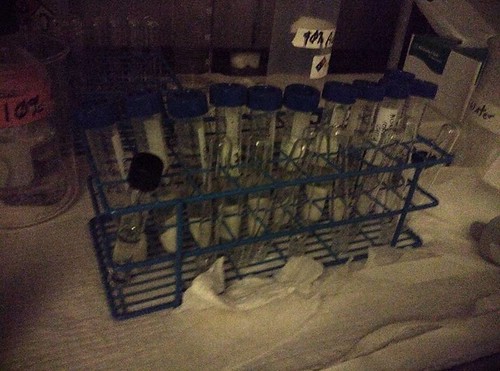
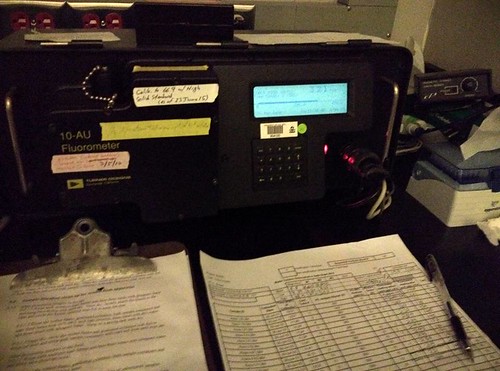
In other news, at Bier One this week, there were didgeridoo performances! Crazy cool stuff. I had never seen a didgeridoo performance before, and it was really cool to hear this instrument I had only heard about/seen on movies/TV shows.
In addition, seeing this performance sparked a conversation I had on the phone with a friend from back home, shortly after discussing whether instruments and music are able to be culturally appropriated. Are music and musical instruments exempt from being appropriated if a huge part of music is about sharing? Or is it not about sharing? A didgeridoo, originating from indigenous Australians, is now being used all over the world (cue map showing how far Australia is from Oregon). Cultural appropriation or cultural exchange? What if the culture of interest are oppressed people and the ones appropriating are the colonizers/oppressors–this implies appropriation, or does it? In this case, colonized indigenous peoples of Australia were oppressed and still are, have an instrument and music style originating from themselves, are now being played by Americans, a country built on colonization. Is this cultural appropriation? What about other cases? What if the two groups are of “equal” levels of treatment, ie) not oppressing the other, is this count as an exchange vs appropriative behavior? Some food for thought…
BUT also at Bier One, I learned a new game, called “Box” which is super easy, where multiple players roll a dice and on a scale of 1-9 tiles, put tiles down in correspondence to the numbers rolled on the dice. The object of the game is to end up with the lowest value combination on the 1-9 scale. Apparently it is a popular game in Newport, according to a local passerby-er.
The next day, we discovered the vastness of the JC Thriftway (a supermarket down the street from us) bakery section. BROWNIES FOR 50 CENTS? why haven’t I been here before?! This was shortly after going to the Rogue Public House on the Bayfront for the first time. Best clam chowder I have ever had in Oregon so far.
Aaaaand the highlight of the week– definitely, the Great Albacore Tuna BBQ Challenge! Amateurs and professional chefs come together across the street from Hatfield and compete for cash prizes for their best tuna dishes. For a student ticket of $10, you can try all the dishes and help judge/vote for a People’s Choice award! With bellies full of tuna (and some of the best dishes I have ever tasted), we continued to eat and try foods for three hours straight while checking out the classic car show that was also there. That’s what I call my ideal Saturday–food/eating and classic cars.
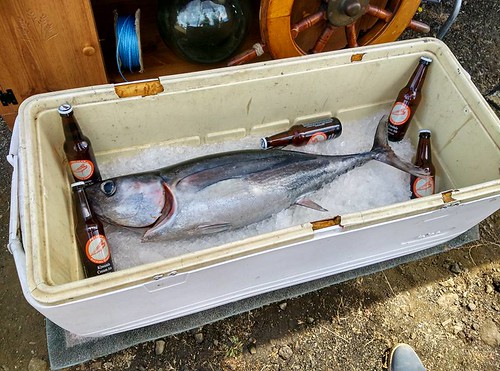
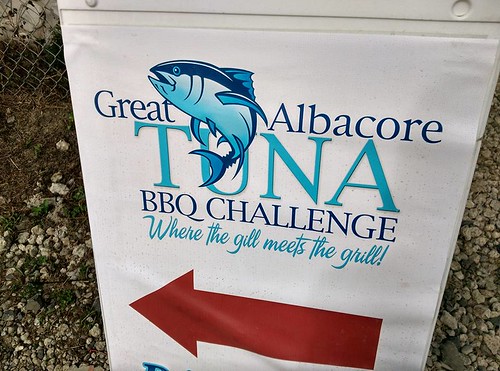
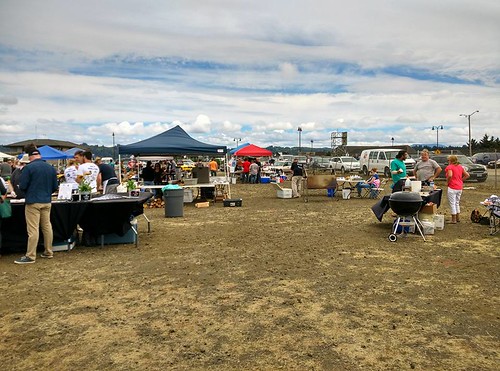
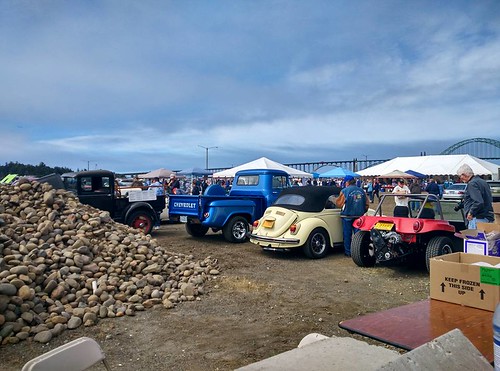
On Sunday, we attended the (now declared historic) Bernie Sanders for president rally in Portland. I personally never really keep up with politics and have never attended a political rally before. It was super fun, super tiring, and really inspiring. A lot of standing around, a lot of screaming and whoo-ing, a lot of emotions and near-tear moments.
And here we are, at my last week at Hatfield. It’s definitely bittersweet saying goodbye to the swallows that fly by my office window and swoop up under the roof and the amazing view by my window: PNW forested landscapes, a mudflat at low tide, and a bay at high.
I am attending the American Fisheries Society annual meeting next week in Portland, representing the Davis-Sacramento Student Subunit! So I won’t be at Hatfield during our week 10. However, I’m sure I’ll have plenty of photos from PDX to share next week. I’ve been working non-stop on my poster and final presentation for the Oregon Sea Grant Summer Scholar student symposium this upcoming Friday. I finally finished printing it!!!!!!!
We had our last EPA intern workshop today as well, talking about elevator speeches and practicing introducing yourself to a variety of different audiences. It was helpful considering I’ll be in those situations where you’re expected to introduce yourself in 30 seconds to a stranger, soon to be colleague, next week and even this Friday.
It’s crazy to think the next time I’ll be writing a blog is after I will be done presenting my OSG scholar work. Time has flown!
Applying Principles of Resilience (Part 2)
 In March, I posted a blog about three of seven resilience principles put forth by the Stockholm Resilience Centre and adapted to my research. Those principles were “maintain diversity and redundancy,” “manage connectivity,” and “manage slow variables and feedbacks.” In this post, I will describe the remaining four principles and how I adapted them to economic vulnerability to hazards.
In March, I posted a blog about three of seven resilience principles put forth by the Stockholm Resilience Centre and adapted to my research. Those principles were “maintain diversity and redundancy,” “manage connectivity,” and “manage slow variables and feedbacks.” In this post, I will describe the remaining four principles and how I adapted them to economic vulnerability to hazards.
Economic resilience to hazards is the ability of the local business community to handle natural hazards. By focusing on how resilience principles can be applied to that specific circumstance, we can identify targeted ways to increase resilience and therefore reduce the vulnerability of the business community. This post will look at the final four resilience principles, and how they apply to the more narrow focus of economic resilience to hazards.
The fourth principle is “foster complex adaptive systems thinking.” Many of the resilience principles are based on a systems perspective, a way of thinking that emphasizes relationships and unpredictability rather than individual elements that function as they have in the past. This principle highlights the importance of not just addressing issues through individual strategies based on systems thinking, but habitually making connections between challenges. From an economic resilience to hazards perspective, this focuses on explicitly considering the connections between different disciplines, types of infrastructure, and hierarchical levels. Finding ways to create solutions that address multiple problems takes creativity and collaboration that systems thinking supports.
The fifth principle is “encourage learning.” Gathering information from many sources helps both to provide more data for planning, and includes additional perspectives. This principle also encourages regular revisiting of strategies based on new information. It is easy to rely on traditional methods without evaluating them to see if they still serve. From an economic resilience to hazards perspective, this principle becomes “gather and share information about hazards resilience.” This focuses on information about how local businesses can better prepare to absorb and recover from disruptions.
The sixth principle is “broaden participation.” For the sake of efficiency or ease, those with the authority to make decisions often only include participation from experts, the majority, or those proactive enough to seek out opportunities. Our communities include many members who lack the time, resources, or context to participate through traditional outreach. These community members require more effort to engage with, but their participation provides more complete understanding of the issue and strengthens social fabric. From an economic resilience to hazards perspective, this becomes “engage under-represented populations.” These populations could be based on geographic or demographic characteristics. Reaching out to voices that have not been included before leads to more representative decisions and a stronger community.
The seventh and final principle is “promote polycentric governance systems.” This refers to governmental structures that can act independently and in a coordinated fashion so that key decisions can be made flexibly depending on the circumstances. From an economic resilience to hazards perspective, this becomes “share and clarify roles and responsibilities with partner organizations.” Beyond city, county, state and federal government agencies, there are many organizations that have an active role in economic development. By connecting these autonomous groups, they can plan better for collaborative efforts, avoid duplicated effort, and anticipate roles during an emergency.
These four principles focus on how organizations work towards their missions on a daily basis, as opposed to the first three principles, which focused more on specific hoped for outcomes. While all are important, complex adaptive systems thinking is absolutely foundational, and sets the others up for success beyond a single project.
A Race to the Finish!
Since last posting on this blog, I’ve conducted another 13 interviews! I’ve been transcribing these conversations as fast as possible and sorting commentary into a list of subheadings so that I can identify themes based on recurring opinions and experiences. This is helping me to recognize elements that make for successful engaged research projects and form recommendations based on areas that could use improvement. I only have two weeks left to finish collecting all of this information and write my final report for the Sea Grant Leadership Team, but it’s coming along well and I’m increasingly excited as I see the final results come together!
Today, I submitted a large format poster that I’ll be presenting at the Summer Scholars Final Symposium this Friday at Hatfield. It contains only my preliminary findings since I’m still making my way through the transcripts, but I’m looking forward to sharing my work and learning about my peers’ projects. (If you click on the image below, you should be able to zoom in and take a closer look on the linked Flickr page.) Look forward to a final blog post next week, in which I’ll talk about my findings and final reflections on engaged research! It’s been a fantastic summer.
